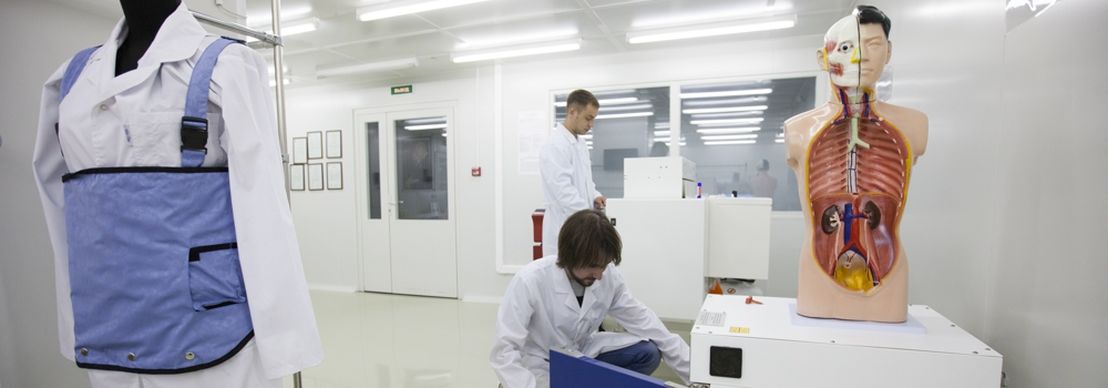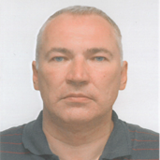

Aleksandr Garmash
Executive Director

Andrei Kabashin
Scientific Supervisor
Global challenges addressed:
- Increased mortality rates from dangerous diseases
- Lack of effective technologies for diagnostics and treatment of deadly socially important diseases
- Lack of multidisciplinary specialists in engineering physics for life sciences and medicine
- Gap between science, education, manufacturing of biomedical devices and practical medicine
Strategic goal:
Achievement of leading positions in the development of technologies of engineering physics for biomedicine and their active employment in the educational process in order to bridge the gap between scientific research, education, device manufacturing and practical medicine.
Structure. Campus in Moscow
- Nanobiomedicine center
- Center for high-tech medicine
- Laboratory of Nanobioengineering
- Laboratory of Hybrid Photonic Nanomaterials
- Laboratory of Biomolecular Technology
- Laboratory of Bionanophotonics
- Laboratory of Nanoteranostics
- Department of Biotechnology
- Department of Industrial Pharmacy
- Department of Nuclear Medicine
- Department of Laser Micro-, Nano- and Biotechnologies
- Department of Translational Medicine
- Department of Medical Physics
- Department of Computer Medical Systems
- Department of Medical Radiology
- Department for Medical Education
- Department of Semiconductor Quantum Electronics and Biophotonics
Campus in Obninsk
- Nanobiomedicine center
- Center for high-tech medicine
- Department of Biotechnology
Engineering
manpower: 105
Students: 1020
- Research
- Education
- Faculty
- Collaboration
- Publications
Development of breakthrough technologies for diagnostics and therapy of cancer and other socially important diseases using unique functional nanomaterials and novel advanced nanoengineering methods based on photonics, radiofrequency, nuclear, ultrasound, magnetic and other modalities:
- Development of diagnostic nanoprobes based on highly oriented conjugates of biocompatible fluorescent nanoparticles and single-domain antibodies for early cancer diagnosis
- “Green” laser-ablative synthesis of novel classes of novel non-toxic nanomaterials and their use as contrast agents, sensitizers and transport vehicles in tasks of cancer nano-theranostics
- Development of novel nanophotosensitizers and medical instruments on their basis for diagnostics and therapies of socially important deceases
- Development of prospective technologies and radiopharmaceuticals for nuclear medicine
- Development of novel efficient pattern recognition computer methods for early cancer diagnosis and therapy
The uniqueness of our approach is the integrated use of mutually complementary nanoengineering methods (synthesis of nanomaterials, their functionalization and optimization for a specified bioimaging or therapeutic procedure) for early cancer diagnosis, imaging of malignant cells, and their elimination using photonic, ultrasound, radiofrequency, magnetic, and nuclear techniques.
- Development and implementation of prospective educational programs that correspond to strategic PhysBio development plans, including programs in nanomedicine, nuclear medicine, computer medicine, medical device development
- Training of engineers-physicists, who are supposed to develop and maintain highly sophisticated biomedical instruments; training of medical doctors, capable of operating with novel biomedical equipment and related instrumentation
- Development and implementation of co-educational programs with world-leading universities, including dual-degree programs
- Development of modular education programs and courses
31 educational programs was available in 2016 in PhysBio from which 6 are Bachelor's degree programs, 16 are Master's degree programs, 3 are Specialist's degree programs, and 6 are Postgraduate student’s degree programs. 14 of them are new, the others – modernized.
| Areas of training | Level |
|---|---|
|
Bachelor's degree programs 03.03.02 – Physics 04.03.01 - Chemical Science 04.03.02 – Chemistry, Physics and mechanics of materials 06.03.01 – Biology 12.03.04 - Biotechnical Systems and Technologies Specialist's degree programs 31.05.01 – General Medicine |
Bachelor's Degree/Specialist's Degree |
|
Master's degree programs 03.04.02 – Physics 06.04.01 – Biology 04.04.02 – Chemistry, Physics and mechanics of materials 12.04.04 - Biotechnical Systems and Technologies 18.04.01 - Chemical Technology Postgraduate student’s degree 03.06.01 – Physics and astronomy 06.06.01 – Biological Sciences 04.06.01 - Chemical Sciences 12.06.01 - Photonics, Instrument Engineering, Optical and Bioengineering Communications Systems |
Master's Degree/Postgraduate's student'sDegree |
Leading Scientists:
Paras Nath Prasad (USA) - SUNY Distinguished Professor, Executive Director, Institute for Lasers, Photonics, and Biophotonics, State University of New York at Buffalo, Head of the PhysBio International Council, H-Index: 105.
Website: www.photonics.buffalo.edu/prasad
Andrei Kabashin (France) – Research Director, French National Center for Scientific Research (CNRS), Aix-Marseille University, Laboratory of Lasers, Plasmas and Photonic Processes LP3, H-index: 33.
Website: www.lp3.univ-mrs.fr
Vitaly Konov (Russia) – Academician of the Russian Academy of Sciences, Professor, Head of Department of Laser Micro- and Nanotechnologies in NRNU MEPhI; Director of the Natural Sciences Center, General Physics Institute of the Russian Academy of Sciences, H-index=35.
Website: www.nsc.gpi.ru/eng/DLISP/Konov.html
Igor Nabiev (France) – 1 class Professor, University of Reims Champagne-Ardenne, Director of the European technology platform “Semiconductor Nanocrystals”, Head of the Nano Bioengineering Laboratory in MEPhI, H-index=37.
Website: lnbe.mephi.ru/ru/science/ruklab
Giovanni Barbero (Italy) – Professor, Politecnico di Torino, H-index: 29.
Website: www.disat.polito.it/personale/scheda/(nominativo)/giovanni.barbero
Marc Sentis (France) – Research Director, French National Center for Scientific Research (CNRS), Aix-Marseille University, Laboratory of Lasers, Plasmas and Photonic Processes LP3, H-index = 31.
Website: www.lp3.univ-mrs.fr
Philippe Delaporte (France) – Research Director, French National Center for Scientific Research (CNRS), Aix-Marseille University, Laboratory of Lasers, Plasmas and Photonic Processes LP3, H-index = 25.
Website: www.lp3.univ-mrs.fr
Rudolf Steiner (Germany) – Professor emeritus, Honorary Director of the “Institute for Laser Technologies in Medicine and Metrology (ILM)” at the University of Ulm, H-index: 22.
Alfredo Strigazzi (Italy) – Senior Professor, Department of Applied Science and Technology, Politecnico di Torino, H-index: 18.
Website: polito.academia.edu/AlfredoStrigazzi
Victor Timoshenko (Russia) – Professor, Moscow State University, H-index: 31.
Valentin Orlovitch (Belarus) – Academician of the National Academy of Sciences of Belarus, Professor, Head of the Laboratory of Nonlinear Optics of the Institute of Physics, National Academy of Sciences of Belarus, H-index: 21.
Andrei Zvyagin (Australia) – Associate Professor, Department of Physics, Faculty of Sciences, Macquarie University, H-index: 19.
Igor Meglinski (Finland) – Professor, Director of the Opto-Electronics and Measurement Techniques Department, Faculty of the Information Technology and Electrical Engineering, University of Oulu, H-index: 26.
Website: www.biophotonics.fi
Yury Rakovich (Spain) – Research Professor, IKERBASQUE, Materials Physics Center in San Sebastián, Professor at Materials Physics Department, University of the Basque Country, H-index: 26.
Website: www.ikerbasque.net/yury.rakovich
Gleb Sukhorukov (Great Britain) – Professor, Chair in Biopolymers and Bio-organic Interfaces, School of Engineering and Materials Science, Queen Mary University of London, H-index: 81.
Anton Fojtík (Czech Republic) – Assoc. Professor Dr. Ing., Czech Technical University in Prague, Faculty of Biomedical Engeneering, Nanosciences, Nanotechnology and Nanostructures, H-index: 18.
Giovanni Alberto Cesare Ummarino (Italy) – Professor, Politecnico di Torino, H-index: 20.
Website: www.ummarino.info/
Partners





Partners











Education Partners







